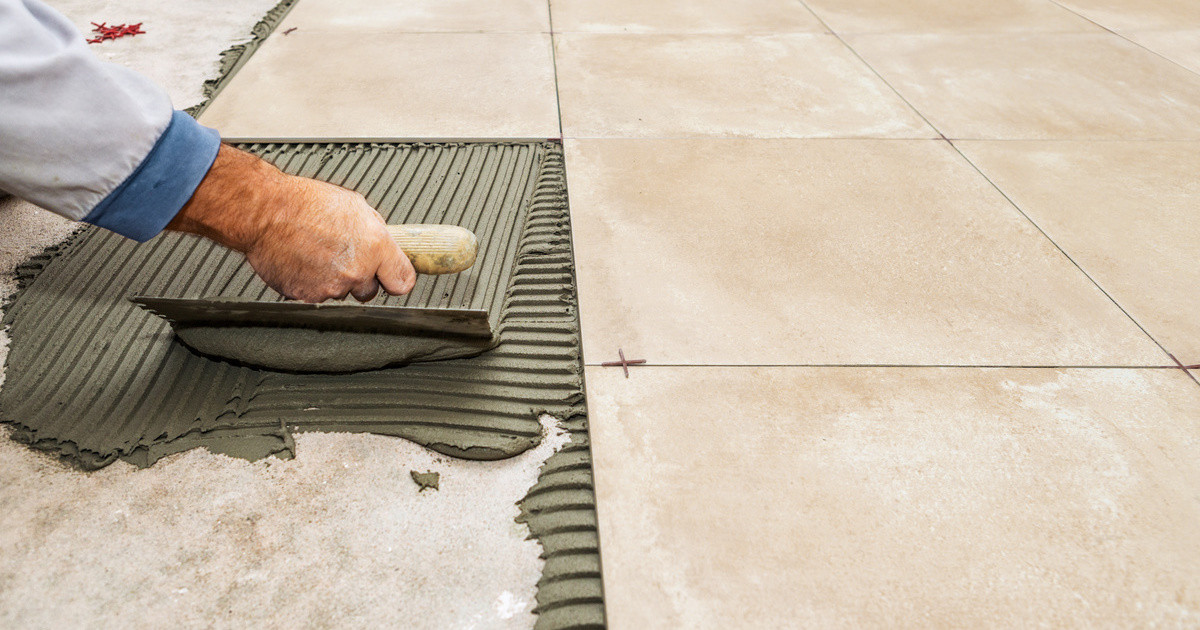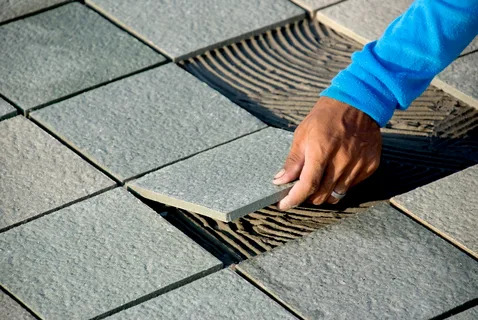Tile flooring remains the preferred surface for kitchens and bathrooms because it withstands conditions where moisture, temperature changes, and heavy use converge. In these spaces, the flooring must resist water infiltration, wear from frequent foot traffic, and exposure to spills, stains, and cleaning agents. Tile’s unique combination of physical properties—low water absorption, hardness, and resilience—delivers consistent performance without compromising on aesthetics or maintenance ease. This article provides an advanced, data-backed examination of why tile flooring excels in these environments, how to select the optimal tile, and considerations that ensure a lasting, safe installation.
Core Reasons Tile Flooring Excels in Kitchens and Bathrooms
Tile’s superior water resistance derives from its low porosity, especially in porcelain variants fired at higher temperatures. This limits moisture penetration that leads to subfloor damage, mold growth, and structural failure. Porcelain tile often has a water absorption rate below 0.5%, significantly outperforming other materials that absorb moisture and deteriorate over time.
The hardness and abrasion resistance of tile surfaces sustain the rigors of kitchens, where dropped utensils, moving appliances, and spilled acidic substances could otherwise degrade softer materials. Tile hardness is quantified by the MOHS scale; porcelain tiles typically score 7-8, indicating high scratch and chip resistance, far above softer stones and synthetic flooring.
Moreover, tile offers excellent stain resistance. Glazed ceramic and porcelain surfaces create an impermeable barrier to oils, food stains, and chemical cleaners commonly used in kitchens and bathrooms. This property simplifies cleaning routines, eliminating the need for harsh chemicals that could damage less durable floors.
In-Depth Comparison of Tile Types for Moisture-Prone Spaces
The most commonly considered tile types are ceramic, porcelain, natural stone, and glass. Their physical characteristics and maintenance demands differ significantly, influencing suitability for kitchens and bathrooms.
| Tile Type | Water Absorption (%) | MOHS Hardness | Durability Factors | Maintenance Complexity | Typical Cost (USD/sq.ft.) |
|---|---|---|---|---|---|
| Ceramic | 3-7 | 5-6 | Moderate wear resistance; susceptible to chipping | Requires regular cleaning; glaze reduces staining | 1 – 5 |
| Porcelain | ≤ 0.5 | 7-8 | High density resists impact and wear | Low maintenance; glaze prevents stains | 3 – 15 |
| Natural Stone | 0.5-15 (varies widely) | 3-7 | Hardness varies by type (e.g., marble softer, granite harder) | Needs sealing to prevent staining and water damage | 5 – 20 |
| Glass | ≤ 0.5 | 5-6 | Resistant to water and stains; fragile under heavy impact | Low cleaning effort; careful installation required | 7 – 20 |
Porcelain Tile Benefits in Depth
Porcelain tile is fired at higher temperatures than ceramic, resulting in a denser, less porous surface that withstands intense wear and water exposure. The combination of vitrification and glazing forms an almost impervious surface, ideal for areas with constant moisture, such as bathroom showers and kitchen splash zones. Porcelain also resists thermal shock and chemical exposure better than ceramic or natural stone.
Natural Stone Considerations
Natural stone tiles like marble and slate introduce complexity due to their variable porosity and hardness. Marble, with a MOHS hardness of about 3-4, is softer and more prone to etching by acidic kitchen substances like lemon juice or vinegar. Slate and granite are harder, with granite scoring close to 7, making them more resistant to scratches but requiring periodic sealing to prevent water absorption and staining.
Slip Resistance and Safety Analysis
Slip resistance in kitchens and bathrooms is critical to prevent accidents, especially in homes with children or elderly occupants. The coefficient of friction (COF) measures tile slip resistance; values above 0.6 are generally considered safe for wet areas.
Tile finishes significantly influence safety. Polished tiles provide a smooth, shiny surface but lower COF values, increasing slip risk when wet. Textured or matte finishes increase friction, improving safety without sacrificing aesthetic appeal. Additionally, incorporating smaller mosaic tiles with more grout lines can enhance grip, since grout provides natural slip resistance.
Installation Impact on Performance and Longevity
The subfloor’s condition and installation technique play crucial roles in tile durability. Uneven or weak subfloors increase the risk of tile cracking or grout failure due to movement and stress.
In kitchens and bathrooms, substrates must resist moisture infiltration to avoid mold and structural degradation. Cement backer boards or waterproof membranes under tile improve stability and protect underlying materials.
Professional installation ensures proper adhesive application and correct grout usage. Epoxy grout, although more expensive, offers superior resistance to stains and water compared to cementitious grout, increasing lifespan in moisture-heavy environments.
Market Insights on Tile Flooring
Industry data highlights tile flooring’s dominant role in kitchen and bathroom renovations. According to the Tile Council of North America, porcelain and ceramic tiles account for over 60% of sales in residential wet-area applications, driven by their technical advantages and evolving design options.
Innovation in tile manufacturing—such as digital printing and large-format porcelain slabs—expands design flexibility without compromising functional qualities. This advances tile from purely utilitarian to a key design element.
Things to Consider Before Making a Decision
Water Exposure Level and Porosity Requirements
High-moisture areas like shower floors demand tiles with extremely low porosity to prevent water damage beneath the surface. Porcelain tile with absorption rates below 0.5% meets this requirement. Conversely, kitchen floors face frequent spills but less constant water exposure, allowing a wider tile selection.
Surface Finish and Safety
Slip resistance requirements vary by household demographics and risk tolerance. Homes with elderly or young children should prioritize tiles with a higher COF and textured finishes. Consider mosaics or small tiles with increased grout area for better grip.
Installation Complexity and Costs
Complex layouts, large-format tiles, or natural stone demand expert installation, affecting cost and timing. The substrate’s moisture resistance must be verified to prevent post-installation issues. DIY installation suits smaller ceramic tiles but often compromises performance and warranty.
Maintenance Regime
Natural stone requires sealing to maintain water and stain resistance, while glazed ceramic and porcelain tiles need minimal ongoing care. Epoxy grout requires less maintenance but is more costly. Cleaning agents must be chosen carefully to avoid damaging grout or tile glaze.
Environmental Factors and Sustainability
Porcelain and ceramic tiles manufactured with recycled materials and energy-efficient firing processes reduce environmental impact. Natural stone, though durable, involves quarrying, which has ecological consequences. Glass tiles often use recycled content but may have higher embodied energy.

Common Questions About Tile Flooring for Kitchens and Bathrooms
What causes tile cracking and how to prevent it?
Tile cracking often results from subfloor movement, poor adhesive application, or impact from heavy dropped objects. Ensuring a stable, level subfloor and professional installation mitigates this risk. Thicker tiles and reinforced backer boards further reduce cracking potential.
Are radiant heating systems compatible with tile?
Tile’s high thermal conductivity makes it an excellent choice for radiant floor heating, distributing heat efficiently and reducing energy use. Installation must consider thermal expansion to prevent tile stress.
How often should grout be resealed in high-moisture areas?
Grout should be sealed every 12-24 months depending on exposure and traffic. Areas with frequent water contact, like showers, may require more frequent sealing to prevent mold growth and discoloration.
Advanced Tips for Maximizing Tile Flooring Performance
- Choose rectified tiles with precise edges to minimize grout lines, reducing water seepage and cleaning effort.
- Consider anti-microbial grout additives in bathrooms to inhibit mold and mildew growth.
- Use transition strips when combining tile with other flooring to accommodate expansion and avoid cracking.
Topic FAQ
Which tile material offers the best long-term moisture resistance?
Porcelain tile consistently outperforms others due to its dense, vitrified surface and low water absorption.
How to improve slip resistance without sacrificing design?
Select textured or matte finishes, smaller tiles with more grout lines, or anti-slip coatings designed for tile surfaces.
Is natural stone viable for kitchen floors despite maintenance needs?
Natural stone can be suitable with correct sealing and maintenance but carries higher risks of staining and etching compared to porcelain.
What is the typical lifespan of well-maintained tile flooring in kitchens and bathrooms?
Properly installed and maintained tile flooring often lasts 20 to 50 years, outperforming most alternative materials.
Can tile withstand chemical cleaners used in kitchens?
Glazed porcelain and ceramic tiles resist most household chemicals. However, avoid abrasive cleaners that can dull the surface or damage grout.
Make the Right Decision
Tile flooring’s technical advantages in water resistance, durability, and maintenance position it as the optimal choice for kitchens and bathrooms. The decision should weigh water exposure, slip resistance needs, installation quality, and maintenance capabilities. Selecting the right tile type and finish tailored to usage patterns ensures longevity, safety, and visual appeal.
Evaluate your environment, lifestyle, and budget carefully. Investing in quality tile and professional installation prevents costly repairs and replacements, safeguarding the value and function of your wet-area floors.
Reviewer: Chloe Martinez brings 8 years of experience in home improvement. Feedback from Chloe helped shape this post to better support companies working to strengthen their reputation and expand their reach.









